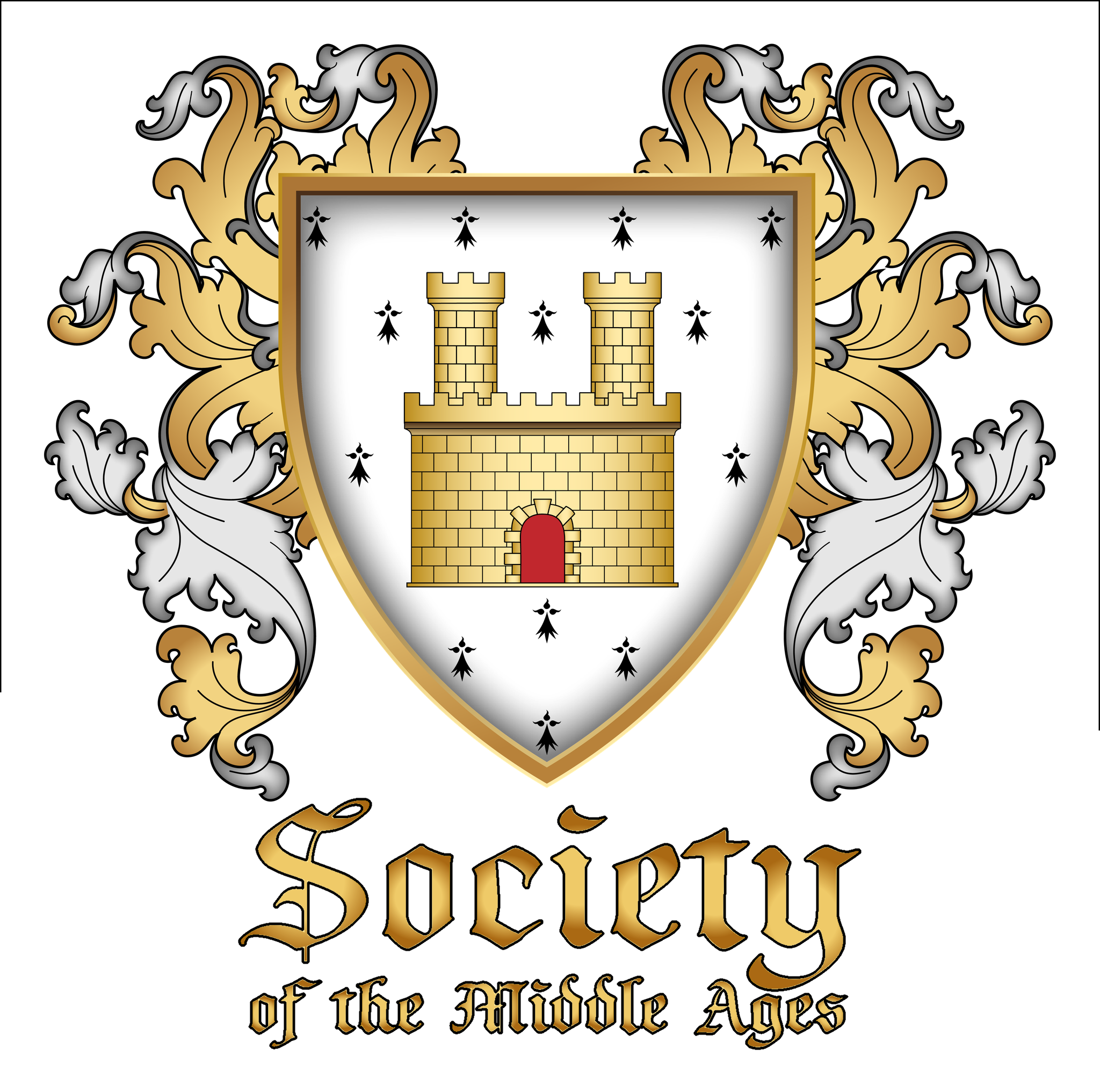Letter of Registrations and Returns
Society of the Middle Ages, Inc.
Office of the Muskatour King of Arms
July 2022
Greetings from the Muskatour office.
Heraldry is as much a science as an art. While most people see heraldry as classic designs or catchy artwork, the science of heraldry involves so much more. Balance, symmetry, field placement, proportion, and weight join with design and color scheme to produce something that is both identifiable at a distance and aesthetically pleasing. It is the science of heraldry that generally results in the most frustration for the submitter because it is those mathematical factors that tend to get in the way of what many clients see as a pretty design.
This has absolutely nothing to do with any of the submissions that we considered this month. I simply felt like waxing eloquent on the science of heraldry and needed something profound to fill the space on this cover letter. This month was actually a fairly easy month from the Muskatour office point of view.
While there are no new precedents this month, I feel as though I should reiterate a couple of points with regard to heraldic design since I suspect that submissions will pick up a bit towards the end of the summer.
First, while there is an art to heraldry, not everything that appears in an artistic motif in period is suitable as an heraldic charge or heraldic pattern. For example, we do not use knotwork in heraldry beyond the few examples of knots that appear in period heraldry. Secondly, while modern symmetry tends to promote mirror imaging across an invisible dividing line, period symmetry promotes the idea that everything faces the same way. Third, “naturalistic” heraldic display is rare to nonexistent until a century or more after the end of our period. These are just some examples of how period heraldic design differs from the modern aesthetic. Why do I mention all of this? If you want a charge, pattern, or layout that does not fall within the standard (and documented) forms listed within the Rules for Submission, you need to provide documentation that such existed in period armoury. There are instructions on what constitutes valid documentation in the RfS and the Administrative Handbook available through your consulting herald. While any artifact known in period can be used as a charge, not every artistic motif constitutes an artifact. If there is any question on whether an artistic item can be used as a charge in our heraldry, the Rules for Submission are available for review and the members of the College of Arms group on social media are always available to respond to questions.
There are no pends and no returns this month.
- Álendia, Kingdom of – New Standard Augmentation
On a canton azure, a lion’s head erased Or - Álendia, Kingdom of – New Award
Lion d’Or
Gules, a lion contourny reguardant within a bordure Or
Awarded at the Crown’s discretion to a combatant for exemplary sportsmanship, honor, chivalry, and showmanship. - Elin merch Llewellyn – New NameSubmitted as Elin merch Llew, the Muskatour staff discovered that the male given name Llew appears in only a single source – a literary reference to a legendary hero of Wales. There is no evidence that the name was ever used by a real person within our period. The client has approved the change to the well-documented Welsh name Llewellyn.Elin was initially documented as a Swedish name which was not compatible with a Welsh surname after 1100. Fortunately, the Muskatour staff was able to find grey period examples of Elin in use in England through the FamilySearch website.Elin Wright dated to 1547 in Cambridgeshire (https://www.familysearch.org/ark:/61903/3:1:3QS7-L96D-QG1D?cc=1465708&personaUrl=%2Fark%3A%2F61903%2F1%3A1%3A6MZ3-9JPZ) and Elin Higforde dated to 1545 in Warwickshire (https://www.familysearch.org/ark:/61903/3:1:S3HY-DRD3-984?i=7).
- Glaisne Ó Ailein – New NameOriginally submitted as Glaisne Ailín, the name was changed to accommodate the client’s request for authenticity for early Irish.Glaisne lacked valid documentation. However, the Muskatour staff was able to locate a Glaisne mac Concobhair Uí Raghallaigh dated to 1459 in “Index of Names in Irish Annals” by Kathleen M. O’Brien (https://medievalscotland.org/kmo/AnnalsIndex/Masculine/Glaisne.shtml)Skene’s transcription of a manuscript dated to 1467 lists multiple instances of the spelling Ailín, showing support for Ailín as a given name dated to period but not as a byname. To register this as a patronymic byname, we would have to add an article… Ó Ailein if this is a clan byname or mac Ailin if this is a father-son byname. The Muskatour staff contacted the client and offered up both options. The client accepted Ó Ailein.
- Hrólfr Hengestes sunu – New NameOriginally submitted as Hrólfr Hengistsson. Hengist is a unique given name attributed to the original Saxon invader of Great Britain in the 5th The name appears in Bede’s Historia ecclesiastica gentis Anglorum and subsequent sources such as the Anglo-Saxon Chronicle / Chronicon and Middle English sources including Geoffrey of Monmouth’s Historia Regum Britanniae (c.1140), Layamon’s Brut (c.1400), and the Chronicle of Robert of Gloucester (14th-15th centuries). There is no other mention of the name in either Nordic or Danish/Germanic records. Thus, it must be considered as an Old English/Anglo-Saxon name that would form a patronymic under Old English rather than Old Norse rules. The client has approved the change.The Old Norse <Hrólfr> and Old English <Hengist> are compatible before 1100.
- Melisende Bernard – New Name, New Legacy Arms
Argent, two bears combatant gules and a rose, a chief engrailed azure. - Robert de Bray – New Legacy Name, New Legacy Arms
Sable, a dragon and issuant from base a demi-sun, a chief embattled grady Or.
RETURNS
None
